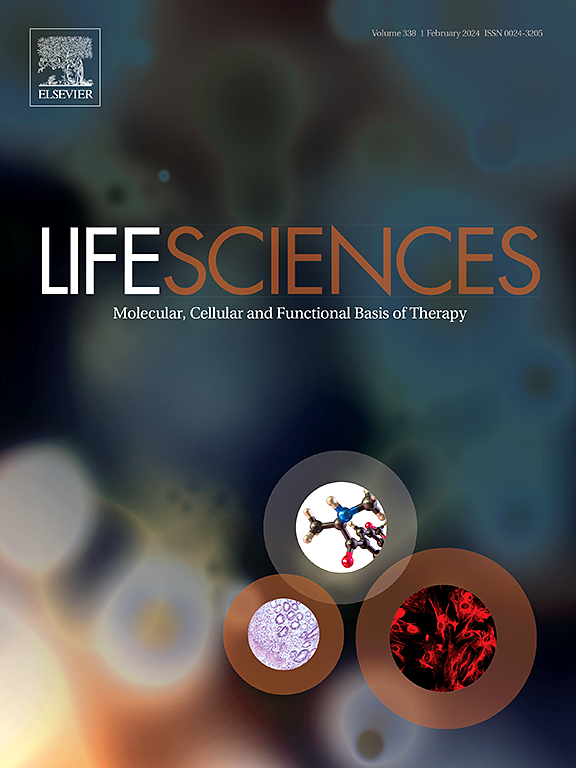A reliable strategy for establishment of an animal model of diabetic cardiomyopathy: Induction by a high-fat diet combined with single or multiple injections of low-dose streptozotocin
IF 5.2
2区 医学
Q1 MEDICINE, RESEARCH & EXPERIMENTAL
引用次数: 0
Abstract
Background
Diabetic cardiomyopathy (DCM) is one of the leading causes of death in patients with diabetes mellitus (DM). This study aimed to identify a reliable method for establishing an animal model of DCM for investigation of new targets and treatments.
Methods
Eighty-four 4-week-old male Sprague–Dawley rats were randomly allocated to receive a normal diet or a high-fat diet (HFD) in an approximate ratio of 1:3. At 9 weeks of age, rats in the HFD group received streptozotocin (STZ) 30 mg/kg by intraperitoneal injection and rats in the control group received the same volume of buffer solution. The rodent model of DM was deemed to be successfully established when a random blood glucose measurement was >16.7 mmol/L on three consecutive occasions. If necessary, STZ was readministered.
Results
Three of the 64 rats in the HFD group died after a second STZ injection. DM was induced in 14, 39, and 8 rats after one, two, and three injections, respectively, with cumulative success rates of 21.9 %, 82.8 %, and 95.3 %. Three months later, the rats with DM showed persistent hyperglycemia and insulin resistance and developed histopathological changes indicating cardiac hypertrophy, myocardial fibrosis, and diastolic dysfunction. The metabolic and cardiac histopathological changes were consistent regardless of whether DM was induced by one, two, or three injections of STZ.
Conclusion
An HFD combined with one or more intraperitoneal injections of low-dose STZ is a straightforward and reliable method for inducing DCM in rats. When a single dose of STZ fails to induce DM, repeated injections can be considered.
建立糖尿病心肌病动物模型的可靠策略:通过高脂饮食结合单次或多次注射低剂量链脲佐菌素进行诱导。
背景:糖尿病心肌病(DCM)是导致糖尿病(DM)患者死亡的主要原因之一。本研究旨在确定一种建立 DCM 动物模型的可靠方法,以研究新的靶点和治疗方法:84只4周大的雄性Sprague-Dawley大鼠按大约1:3的比例随机分配接受正常饮食或高脂肪饮食(HFD)。9 周大时,HFD 组大鼠腹腔注射 30 毫克/千克链脲佐菌素(STZ),对照组大鼠腹腔注射相同体积的缓冲溶液。当随机血糖测量值连续三次>16.7 mmol/L时,即认为DM啮齿动物模型建立成功。必要时,重新注射 STZ:结果:HFD 组的 64 只大鼠中有 3 只在第二次注射 STZ 后死亡。注射一次、两次和三次 STZ 后,分别有 14 只、39 只和 8 只大鼠诱发了 DM,累计成功率分别为 21.9%、82.8% 和 95.3%。三个月后,患有 DM 的大鼠表现出持续的高血糖和胰岛素抵抗,并出现组织病理学变化,表明心脏肥大、心肌纤维化和舒张功能障碍。无论通过注射一次、两次还是三次STZ诱导DM,代谢和心脏组织病理学变化都是一致的:结论:高密度脂蛋白饮食结合一次或多次腹腔注射低剂量 STZ 是诱导大鼠 DCM 的一种简单可靠的方法。如果单剂量 STZ 无法诱导 DM,可考虑重复注射。
本文章由计算机程序翻译,如有差异,请以英文原文为准。
求助全文
约1分钟内获得全文
求助全文
来源期刊

Life sciences
医学-药学
CiteScore
12.20
自引率
1.60%
发文量
841
审稿时长
6 months
期刊介绍:
Life Sciences is an international journal publishing articles that emphasize the molecular, cellular, and functional basis of therapy. The journal emphasizes the understanding of mechanism that is relevant to all aspects of human disease and translation to patients. All articles are rigorously reviewed.
The Journal favors publication of full-length papers where modern scientific technologies are used to explain molecular, cellular and physiological mechanisms. Articles that merely report observations are rarely accepted. Recommendations from the Declaration of Helsinki or NIH guidelines for care and use of laboratory animals must be adhered to. Articles should be written at a level accessible to readers who are non-specialists in the topic of the article themselves, but who are interested in the research. The Journal welcomes reviews on topics of wide interest to investigators in the life sciences. We particularly encourage submission of brief, focused reviews containing high-quality artwork and require the use of mechanistic summary diagrams.
 求助内容:
求助内容: 应助结果提醒方式:
应助结果提醒方式:


